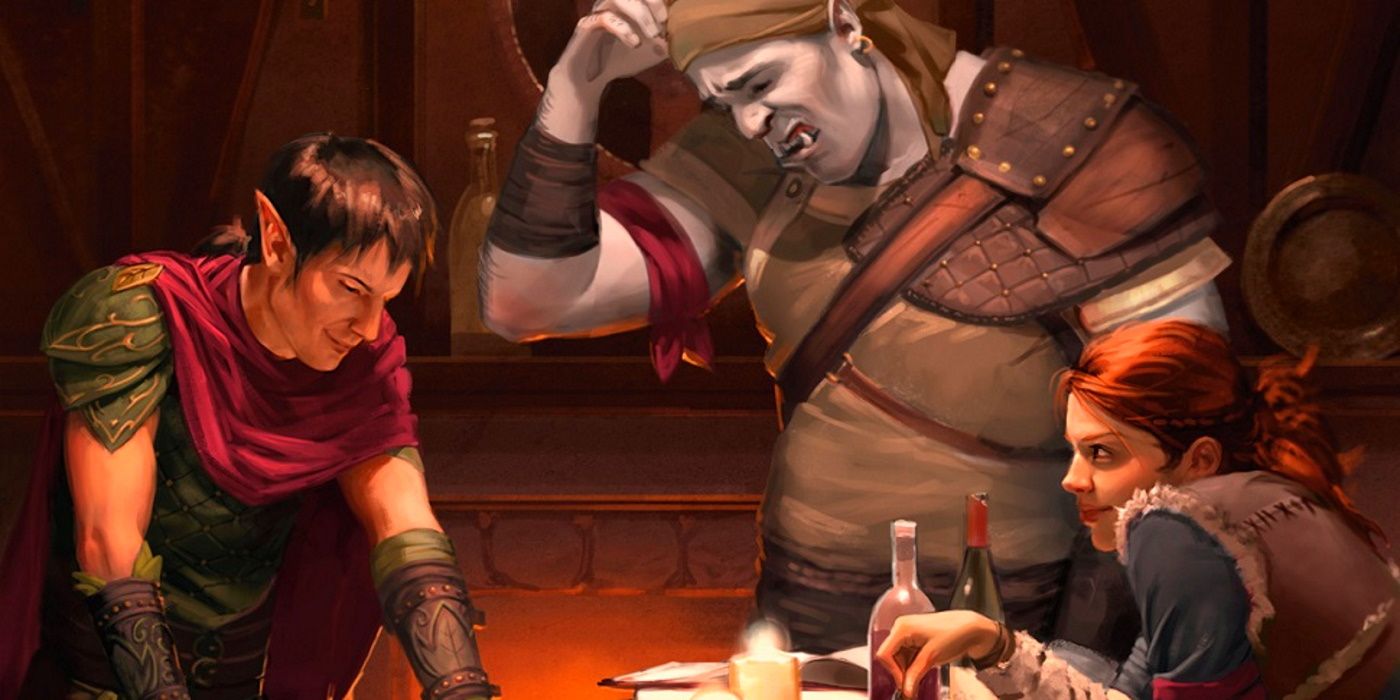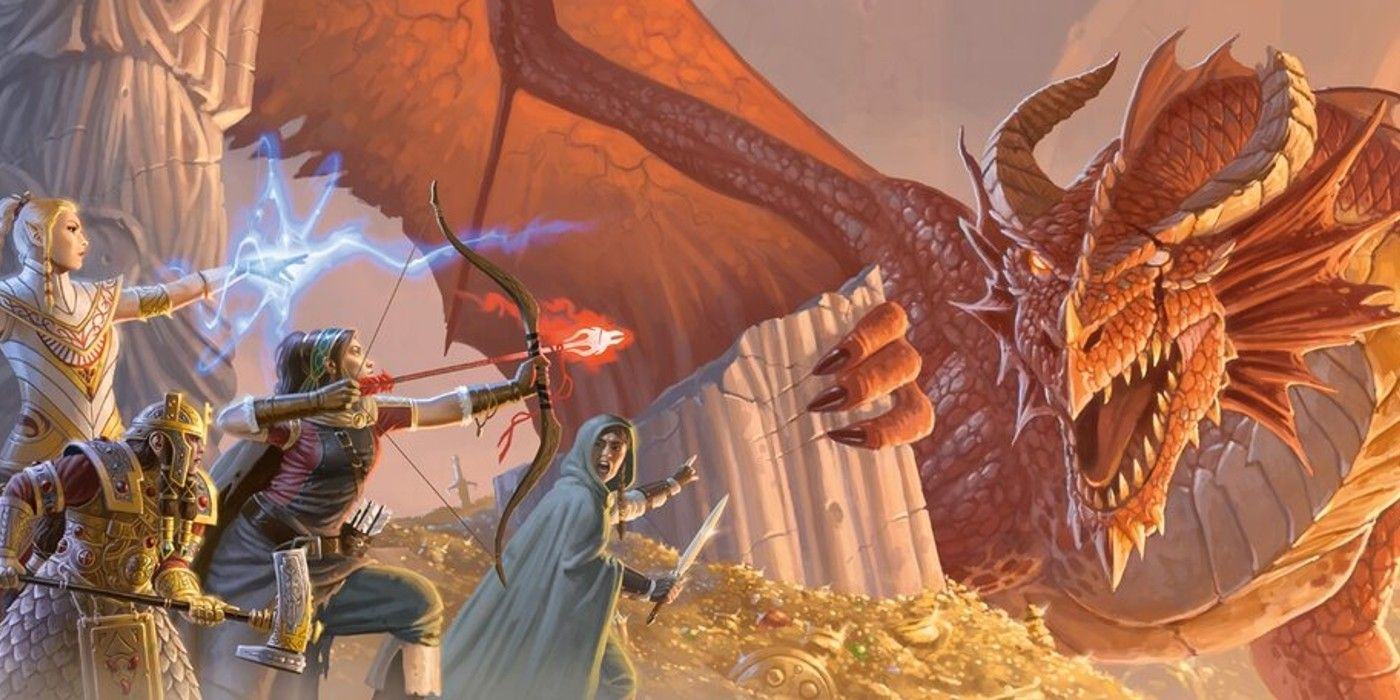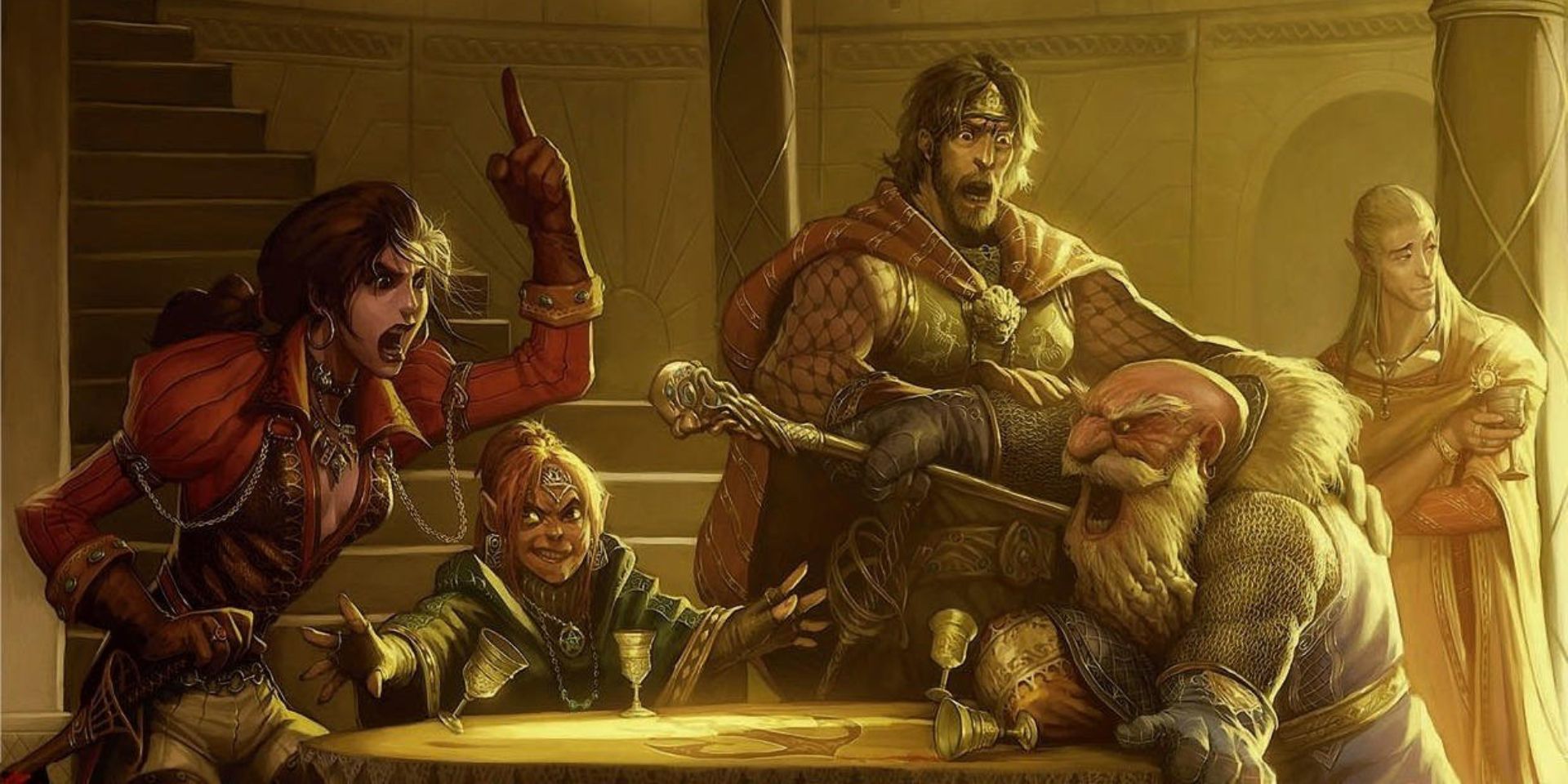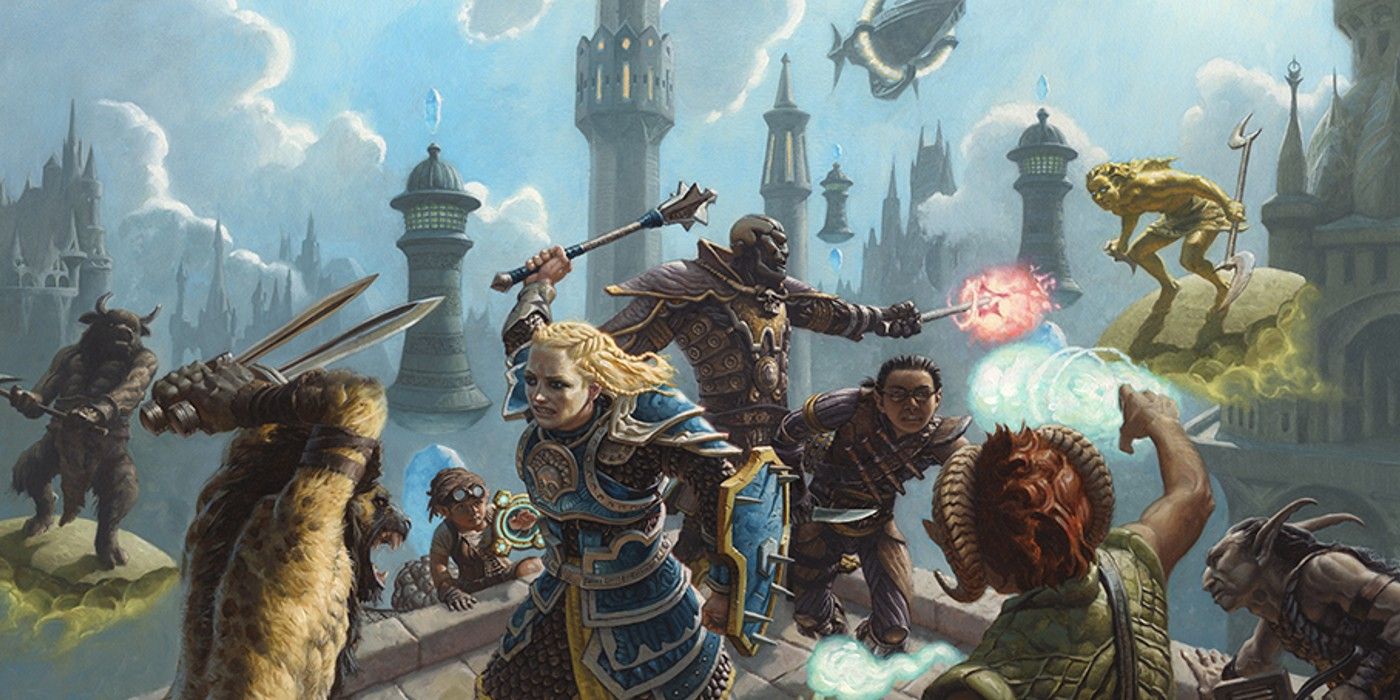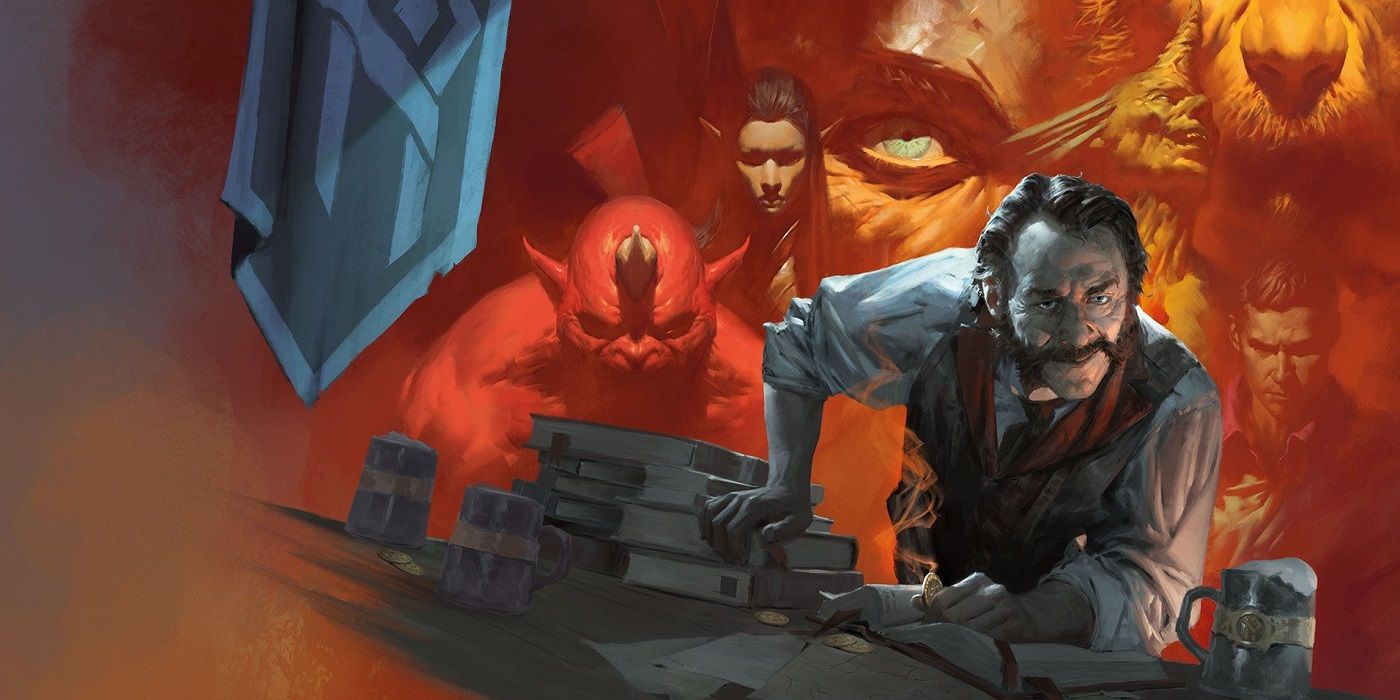Dungeons & Dragons is a game where players work together as a team to fulfill a common goal, but what happens if their characters don't trust each other? Players and DMs can use many techniques to help build trust between an adventuring party that isn't quite getting along. However, there could be reasons both players and DMs want to keep a party distrustful. Whether the campaign is about a group of shady people learning to do good or morally gray characters planning a heist finding the right balance can be tricky.
Traditionally, players tend to choose a classic RPG adventuring party filled with good-aligned characters out to save the world. However, after a while, that can become a little boring, and sometimes what every D&D group needs is a campaign or one-shot where everyone's a bit shady. The party might want their roleplaying game to be a great heist story or be hired mercenaries for a wealthy noble, tasking them with questionable missions. Whatever the reason, it can be a lot of fun to stray away from the typical good vs. evil D&D tropes.
Distrust within the party can come from many different places. Backgrounds, moral alignments, and even who knows what about the mission can create a party who don't quite trust each other. Here is some advice for players and DMs on playing in a campaign with mistrustful characters.
Distrustful D&D Parties Can Still Have Each Other's Backs
One of the most important things to remember is that trust is not the same as loyalty. The characters don't need to trust each other in order to be loyal to the team. Look at examples of teams similar to D&D group builds from other media that started and, in some cases, stayed mistrustful of each other.
Marvel's Guardians of the Galaxy, Critical Role's Mighty Nein when they first met, and even Luke and Obi-Wan when they were introduced to Han and Chewbacca in Star Wars are great examples. These teams did not trust each other to begin with but remained loyal to each other in difficult situations. In each scenario, the mission remained the top priority outweighing any trust issues simmering within the party.
DMs should throw situations at the party that are impossible to beat unless they work together. This will force the player characters to begrudgingly team up and earn each other's respect in battle. By creating situations where they can't or really shouldn't split the D&D party, DMs can force the player characters to interact. Afterward, it is essential to reward them for working together or creating appropriate consequences if they do not.
Motivation For Distrustful D&D Parties To Work Together
Motivating a group of people who don't trust each other to work together is the key to a successful campaign. Some published campaigns are easier than others when forcing a party to work together. For example, Curse of Strahd forces the team into cooperation to escape Ravenloft. In contrast, Decent into Avernus is a little tricker as the motivations are more altruistic for wanting to save Elturel.
The easiest way to motivate players is by making the reward of working together something they can't ignore, and the most effective D&D reward DMs can use is gold, lots of gold. DMs can have the players be hired to fulfill a task and tell them they have been specially chosen for this because of their skills. The players might not trust the rest of the party, but in order to get paid, they will have to work with them.
Homebrew campaigns might be a little easier when creating situations for the players as the DM can craft the campaign perfectly around the goals of everyone sitting around the table. Another option could be to take a published campaign and alter or tweak it for the desired purpose. DMs could even adapt a book series into a great D&D homebrew setting, depending on what story they and the players want to tell.
DMs Can Use Player Backstories To Create Common Bonds
Having characters that don't trust each other can make for some really fun roleplaying for players. Their characters might vie for leadership, which in turn could lead to the party being poorly organized. While this isn't necessarily bad, it could lead to decision paralysis and simple tasks falling by the wayside.
So, once the adventuring party has been formed, keeping them on task is the next goal. DMs can use player character backstories for this. A common goal or enemy outside the main mission is a great way to keep players focused, especially in a long-running D&D campaign where the primary bad guy or goal could be a long way off. NPCs can be useful for forging alliances or creating common goals that align within the group.
Do any of the players have NPCs in the backstories in common or ones that could be melded into one NPC? Do two or more players know and care about a particular NPC they have met, perhaps a shopkeeper or someone who has helped the group so far? By using these NPCs, either by putting them in danger or having them give side quests, DMs can gently poke the party in the right direction when they get off task. And remember, just because the party doesn't trust each other doesn't mean they don't trust anyone. Having some trusted NPCs is a good D&D narrative trick to get the party back on track, will break up any intra-party tension as well as create great roleplaying moments.
DMs Need To Have Established Ground Rules
It is vital that everyone involved is clear about what they are comfortable with from the beginning. In order to do this, it's important to establish early on what everyone expects from the campaign and what the tone will be. Is this a more comedic campaign about a group of hapless criminals? Or will this campaign have a more serious tone taking a deep look at the question of morality and trust?
There need to be clear rules around what happens if a player deliberately attempts to derail the game. Player characters who don't trust each other can and will lead to players having arguments in character, so having rules and boundaries in place from the beginning is a must. Having a D&D session zero can fix problems before they start and is good practice for any D&D campaign.
When DMing for a party who, for whatever reason, are purposely not trusting each other, DMs will need to be a little firmer with players to discourage any literal backstabbing. Just because player characters don't trust each other is no reason for players around the table to be rude to each other. In that regard running a campaign for a distrustful group is not dissimilar to running an evil campaign.
Creating interesting and different party dynamics is one of the most fun parts of D&D and leads to some of the most rewarding and fun D&D roleplay opportunities. Making a party full of characters who don't trust each other is an exercise in communication for all involved. There are many reasons a Dungeons & Dragons group could choose to play with a party who don't trust each other, but as long as everyone is on the same page from the start, it can be a ton of fun.

